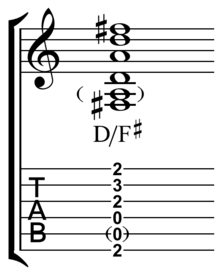
A mandolin is a stringed musical instrument in the lute family and is generally plucked with a pick. It most commonly has four courses of doubled strings tuned in unison, thus giving a total of eight strings. A variety of string types are used, with steel strings being the most common and usually the least expensive. The courses are typically tuned in an interval of perfect fifths, with the same tuning as a violin. Also, like the violin, it is the soprano member of a family that includes the mandola, octave mandolin, mandocello and mandobass.

The seven-string guitar adds one additional string to the more common six-string guitar, commonly used to extend the bass range or also to extend the treble range.

D A D G A D, or Celtic tuning, is an alternative guitar tuning most associated with Celtic music, though it has also found use in rock, folk, metal and several other genres. Instead of the standard tuning the six guitar strings are tuned, from low to high, D2A2D3G3A3D4.

A tiple, is a plucked typically 12-string chordophone of the guitar family. A tiple player is called a tiplista. The first mention of the tiple comes from musicologist Pablo Minguet e Irol in 1752. Although many variations of the instrument exist, the tiple is mostly associated with Colombia, and is considered the national instrument. The Puerto Rican version characteristically has fewer strings, as do variants from Cuba, Mallorca, and elsewhere among countries of Hispanic origin.

The Russian guitar (sometimes referred to as a "Gypsy guitar") is an acoustic seven-string guitar that was developed in Russia toward the end of the 18th century: it shares most of its organological features with the Spanish guitar, although some historians insist on English guitar descent. It is known in Russian as the semistrunnaya gitara (семиструнная гитара), or affectionately as the semistrunka (семиструнка), which translates to "seven-stringer". These guitars are most commonly tuned to an open G chord as follows: D2 G2 B2 D3 G3 B3 D4. In classical literature, the lowest string (D) occasionally is tuned down to the C.
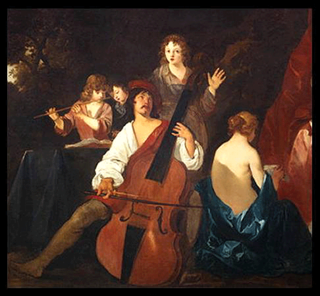
The term violone can refer to several distinct large, bowed musical instruments which belong to either the viol or violin family. The violone is sometimes a fretted instrument, and may have six, five, four, or even only three strings. The violone is also not always a contrabass instrument. In modern parlance, one usually tries to clarify the 'type' of violone by adding a qualifier based on the tuning or on geography, or by using other terms that have a more precise connotation. The term violone may be used correctly to describe many different instruments, yet distinguishing among these types can be difficult, especially for those not familiar with the historical instruments of the viol and violin families and their respective variations in tuning.
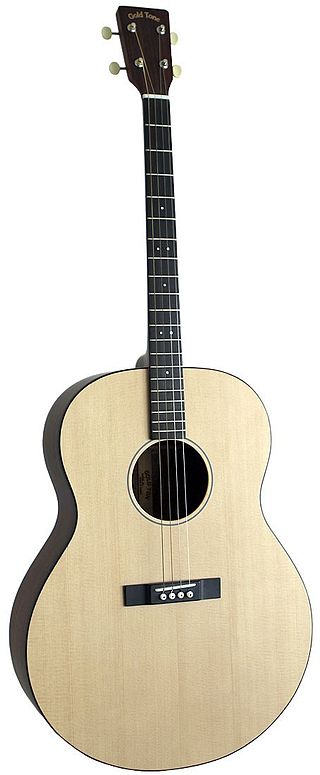
The tenor guitar or four-string guitar is a slightly smaller, four-string relative of the steel-string acoustic guitar or electric guitar. The instrument was initially developed in its acoustic form by Gibson and C.F. Martin so that players of the four-string tenor banjo could double on guitar.

A piccolo bass is either an electric bass or acoustic double bass which has been tuned to a higher frequency, usually one octave higher than conventional bass tuning. This allows bass players to use higher registers during soloing while retaining a familiar scale length and string spacing.

A classical guitar with additional strings is a nylon-string or gut-string classical guitar with more than six strings, in which the additional strings pass over a fingerboard so that they may be "stopped" or fretted with the fingers. These are also known as extended-range guitars, and should not be confused with harp guitars.
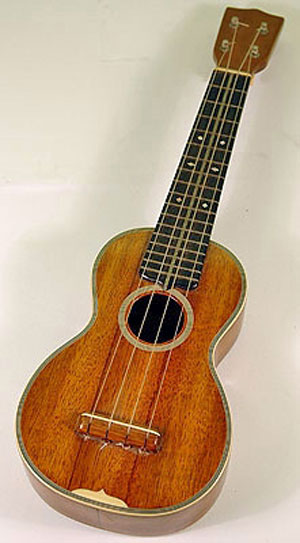
On a stringed instrument, a break in an otherwise ascending order of string pitches is known as a re-entry. A re-entrant tuning, therefore, is a tuning which does not order all the strings from the lowest pitch to the highest pitch.

Laúd is a plectrum-plucked chordophone from Spain, played also in diaspora countries such as Cuba and the Philippines.
The octophone is a stringed musical instrument related to the mandola family resembling an octave mandolin. It was marketed by Regal Musical Instrument Company, who introduced it 21 January 1928, as an "eight-purpose instrument".
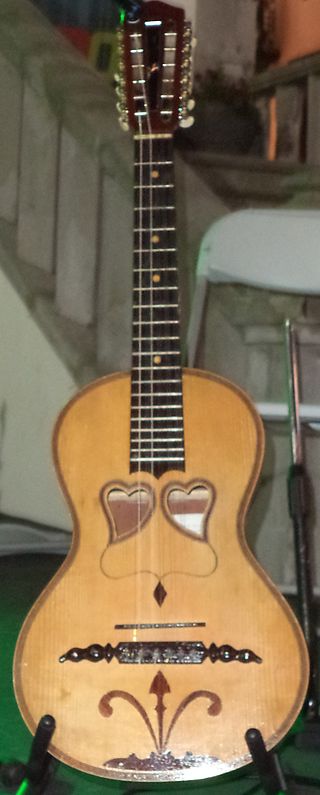
Viola da terra is a stringed musical instrument from the islands of the Azores, closely associated with the saudade genre of Portuguese music. Its 12 or 15 metal strings are arranged in either five or six courses.
The viola da Terceira is a stringed musical instrument of the guitar family, from the Portuguese islands of the archipelago of the Azores, associated with the island of Terceira.

The Algerian mandole is a steel-string fretted instrument resembling an elongated mandolin, widely used in Algerian music such as Chaabi, Kabyle music and Nuubaat.

Among alternative tunings for guitar, a major-thirds tuning is a regular tuning in which each interval between successive open strings is a major third. Other names for major-thirds tuning include major-third tuning, M3 tuning, all-thirds tuning, and augmented tuning. By definition, a major-third interval separates two notes that differ by exactly four semitones.

Among alternative guitar-tunings, regular tunings have equal musical intervals between the paired notes of their successive open strings.
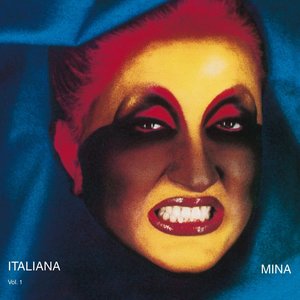
Italiana is a double studio album by Italian singer Mina, released in November 1982 by PDU and distributed by EMI Italiana.

Harry James and His Orchestra 1948–49 is a double album by American trumpeter Harry James with The Harry James Orchestra. The album consists of live radio transcripts recorded during 1948 and 1949 and was released in 1969 by Big Band Landmarks.

Back from the Brink: Pre-Revolution Psychedelic Rock from Iran: 1973–1979 is a 2-CD/3-LP compilation album of Iranian songwriter, singer, and composer Kourosh Yaghmaei's solo material, released in 2011. It is a compilation of Yaghmaei's best-known numbers, recorded between 1973 and 1979, before the Islamic Revolution. The original sessions were produced by Kourosh Yaghmaei, while this anthology was produced by Egon for his Now-Again Records label.

